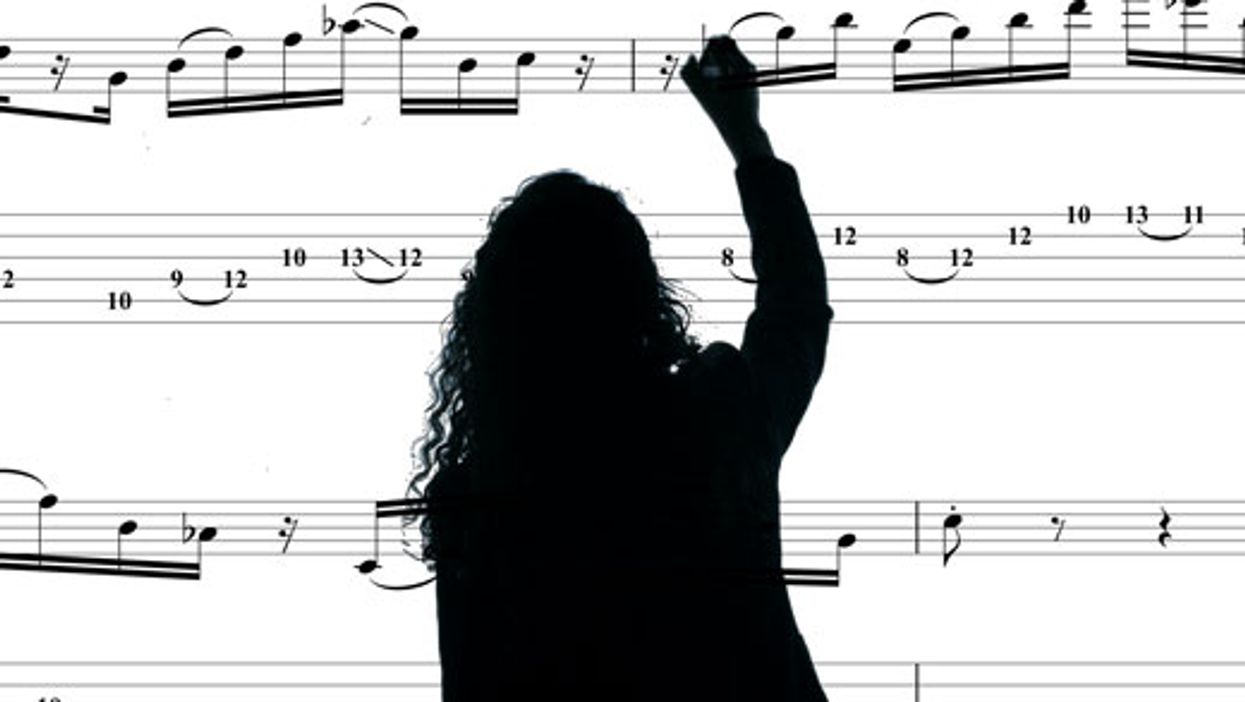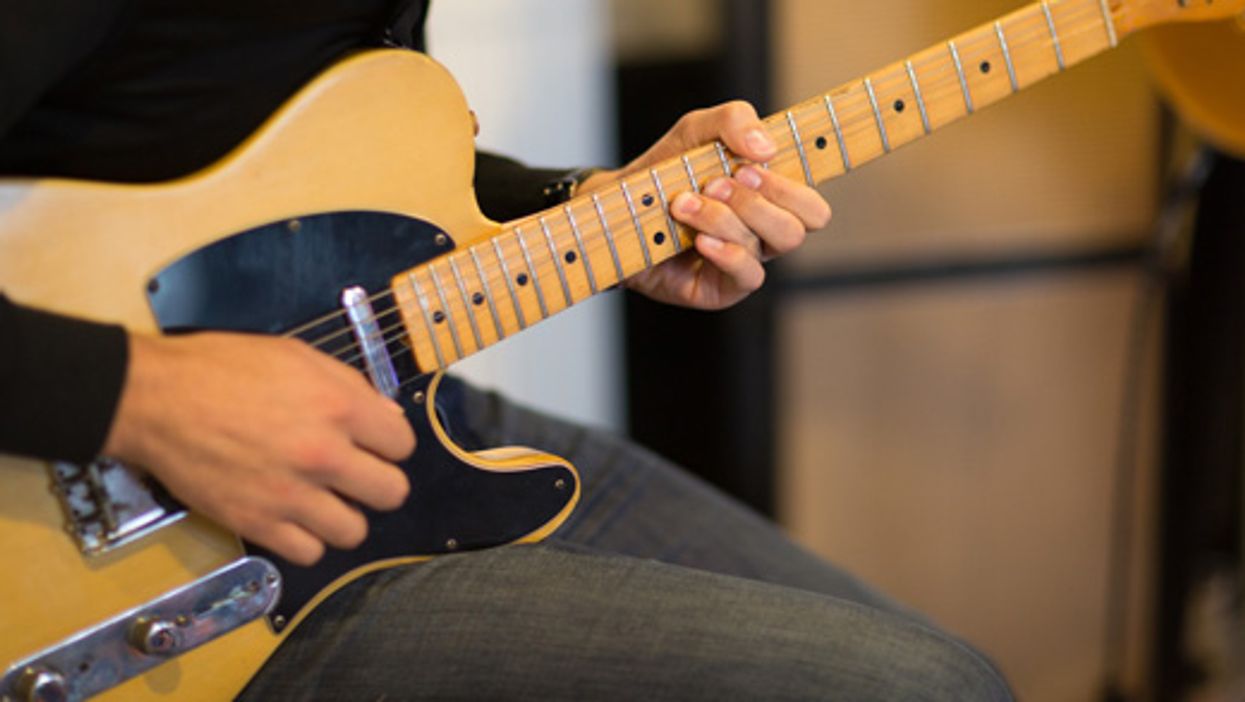Welcome back! Now that you have played these extended patterns across the fingerboard, you are going to see repeating patterns that make up these scales and extended fingerings. This lesson will introduce a concept called tetrachords and give you some examples on how to construct scales with them and to help you master the modes across the fretboard much easier.
What are Tetrachords?
Basically, tetrachords is a series of four tones that make up a interval of a perfect fourth. The modes of the major scale are made up of two tetrachords, and there are four main patterns, which I list below.
Tetrachord Application
Ex 1a-1d If you look at these examples you will see the four main patterns (major, minor, Phrygian and Lydian) of tetrachords. If you are not sure what this means, the major tetrachord is built from the first four notes of a major scale, you could look at it as whole step/whole step/half step. The minor tetrachord is built from the first four notes of the minor scale or whole step/half step/whole step.
| Download Example Audio | Download Example Audio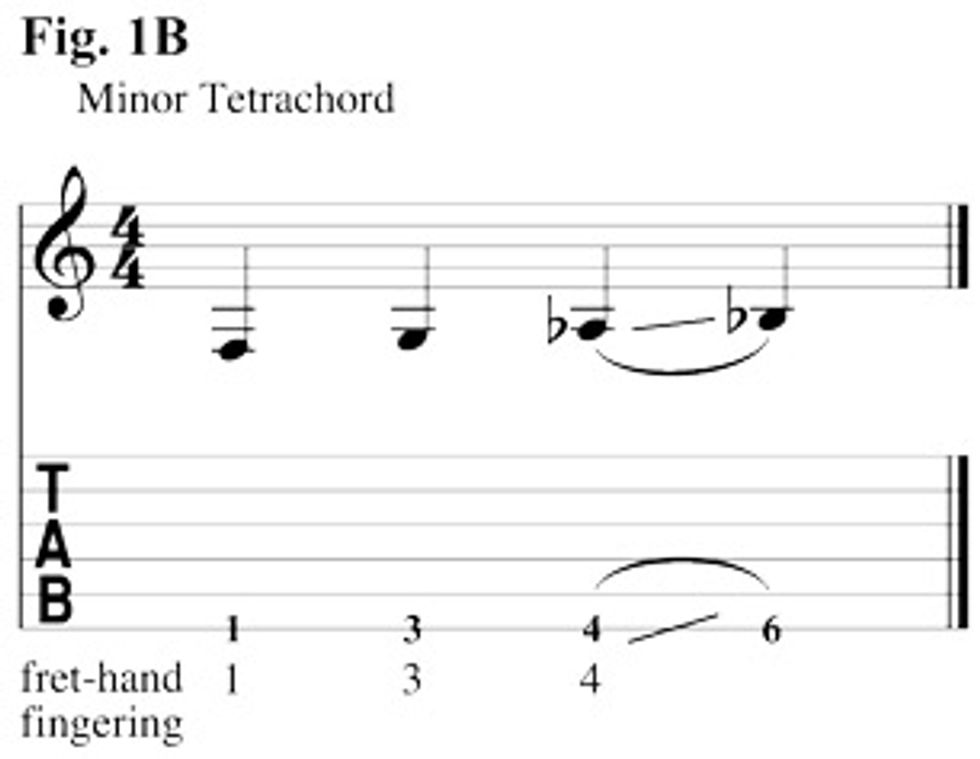 |
Download Example Audio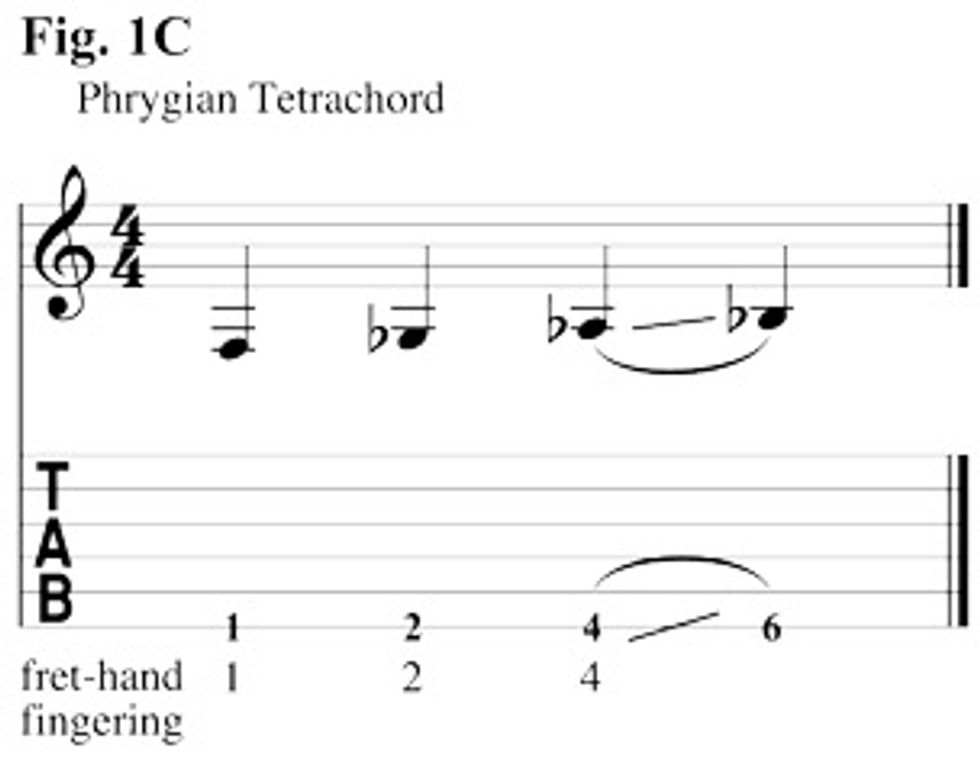 | Download Example Audio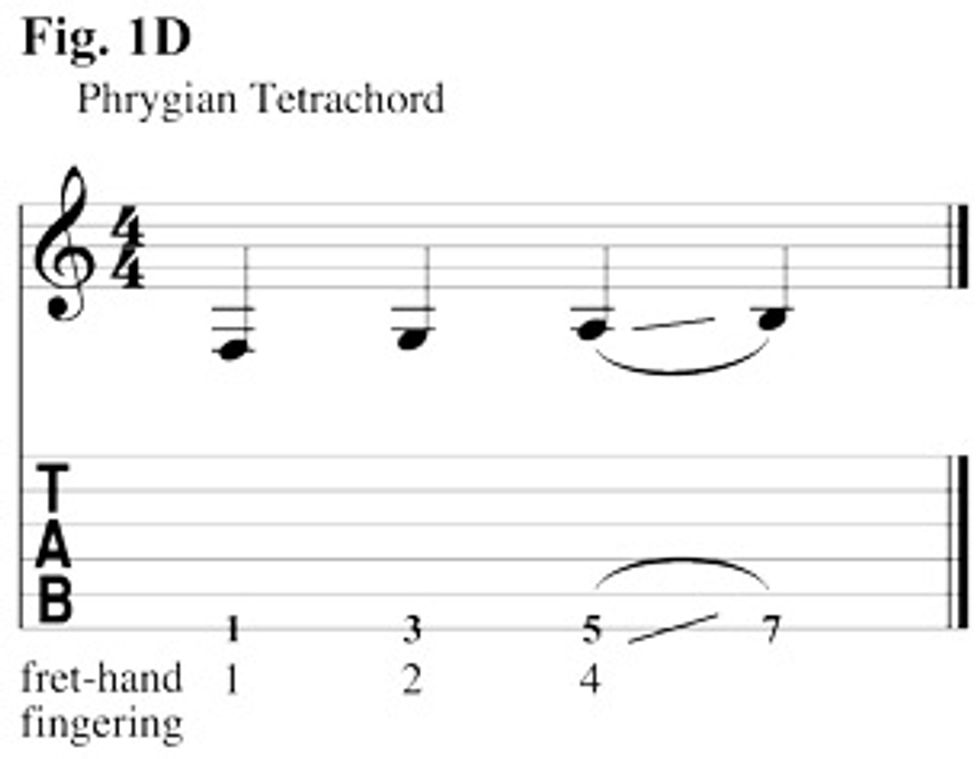 |
Ex.2 If you look at the F Dorian pattern, it is constructed with two minor tetrachords separated by a whole step. This pattern can be applied to all keys to create a Dorian mode. You can also think of it as the first tetrachord is off the root and the second one is built off the 5th.
Download Example Audio
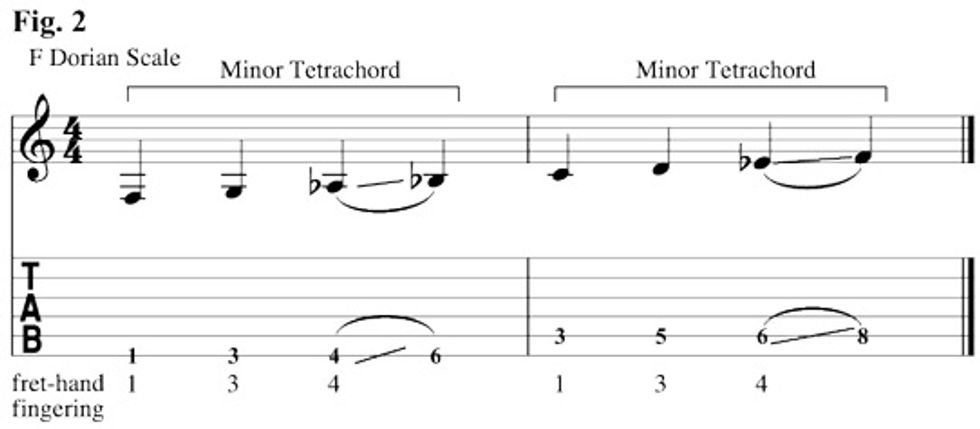
Ex.3 The F Phrygian is constructed with two Phrygian tetrachords separated by a whole step. Each Phrygian tetrachord is built half step-whole step-whole step.
Download Example Audio
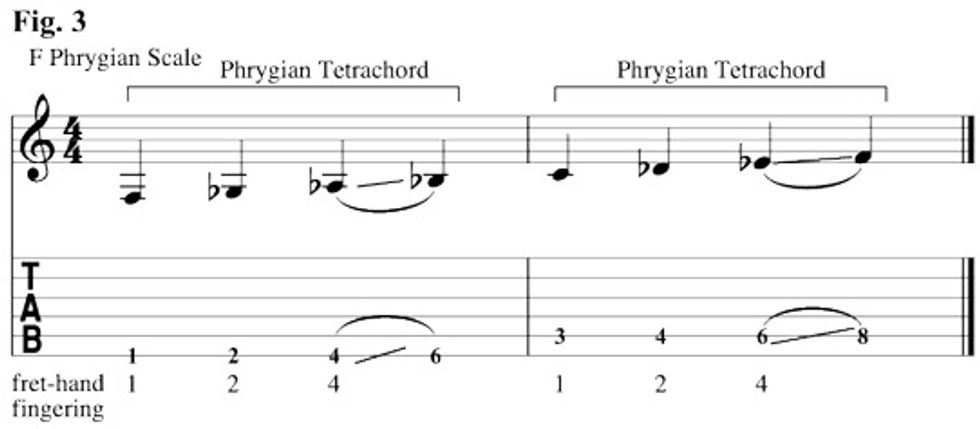
Ex.4 Here is an extended F Ionian scale (F–G–A–Bb–C–D–E). I labeled the names of the tetrachords above so you can see how this extended pattern is constructed. This extended pattern is built with two major tetrachords, then two minor tetrachords, then a Phrygian tetrachord. Since we are stopping at the high F, we are only using one Phrygian tetrachord and part of another, basically. If you keep going it would be two Phrygian tetrachords. Like the extended patterns in the previous lesson I'm picking all four notes on a string and sliding up with my pinky finger.
Download Example Audio
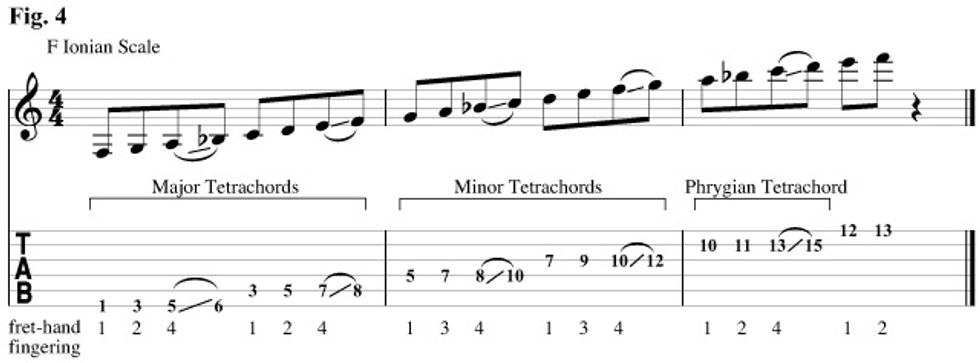
Ex.5 Lets take a look at this extended F Aeolian scale (F–G–Ab–Bb–C–Db–Eb). It is built with a minor tetrachord, two Phrygian tetrachords, a Lydian tetrachord and a major tetrachord. If you continue, the pattern of tetrachords will be the same.
Download Example Audio
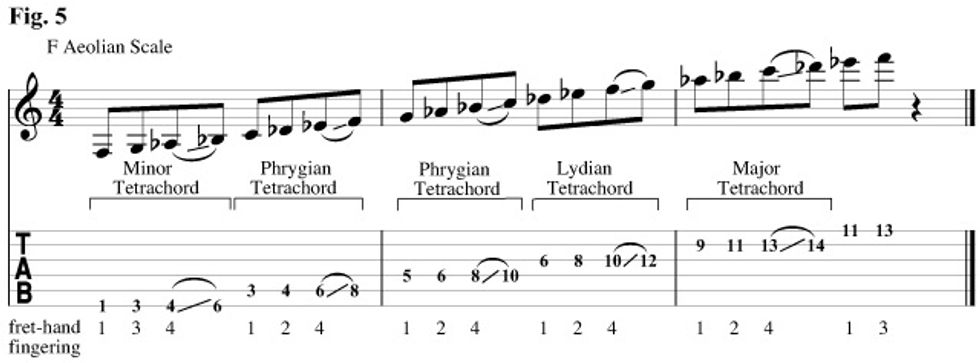
Be sure to really study this and figure out the patterns for the other modes. By knowing this you can learn all your modes and scales a lot easier across the fingerboard. I've just released a new CD Electric City, which you can read more about on www.mikecampese.com.



